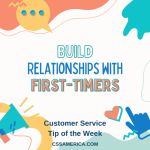There are not many industries where transferring a customer to a competitor is considered the right thing to do. There are even fewer where encouraging a customer to go to a competitor is common. And even less frequent than both of those occurrences is where one organization plans for a customer to leave them after a couple years to go to a competitor.
Now we’re not talking about a typical competitive relationship in this case; here, we’re talking about community colleges and 4-year universities. Where community colleges and universities often do compete for students, more and more universities are suggesting to some students to consider the community college route and transfer to a university after two years.
But the situation we’re describing in this post is where the community college – from Day 1 – should begin helping students to think longer-term – Where are you going after the second year here? What can we do in 2-3 years at our community college to get you positioned for an effective transfer to a 4-year university?
In the article MCCC Boasts High Student Transfer Rate, Monroe County Community College was recognized by CNNMoney for its high student transfer rate. That’s right…community colleges are considered successful if they transfer a high rate of students to a four-year institution. This Student Success-related metric is becoming more discussed and more used in determining future funding of community colleges. It’s because the educational system as a whole is being encouraged to better utilize community colleges as a lower cost way of getting (or at least) beginning a process toward a degree.
Beginning with the end in mind is not just good Covey phrasing. If community colleges want to be successful, they have to proactively work with students to create a plan to achieve that higher ed vision. They have to help individual students to understand what needs to be done in year one at the community college to graduate from the University in year four or five.
It’s not simply about getting the student admitted, getting them registered, or getting them into a program (and those processes aren’t often “simple” anyway). It’s about viewing each student as an individual, understanding their vision (or helping them create one), and – even when that vision goes beyond the college to the university – getting them on track to succeed.
Know if the Vision is the Transfer.
Learn about our CSS Education services at: http://cssamerica.com/cssed.htm
Interested in improving your educational organization’s customer satisfaction? See our other blog posts at: http://serviceadvice.cssamerica.com/category/education/





















